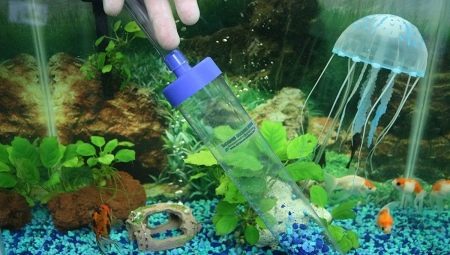The filter is a must-have aquarium accessory for maintaining the vital activity of fish and providing them with oxygen. Its purchase should be taken very carefully so that the purchase does not spoil the balance in the aquarium, killing beneficial bacteria, and does not cause the death of your fish. The filter has the property of becoming dirty, so it is important to be able to clean it properly.

the washing up
Cleaning blocks are now sold in all shapes and sizes, but if the filter is small, then it should be cleaned every week, because dirt accumulates faster, and for a large unit you can clean it once every couple of months. But these recommendations are only superficial, you always need to monitor the condition of the device, and if after a couple of weeks it has turned green and covered with mud, then waiting another two months is simply not true, no matter how big it is.
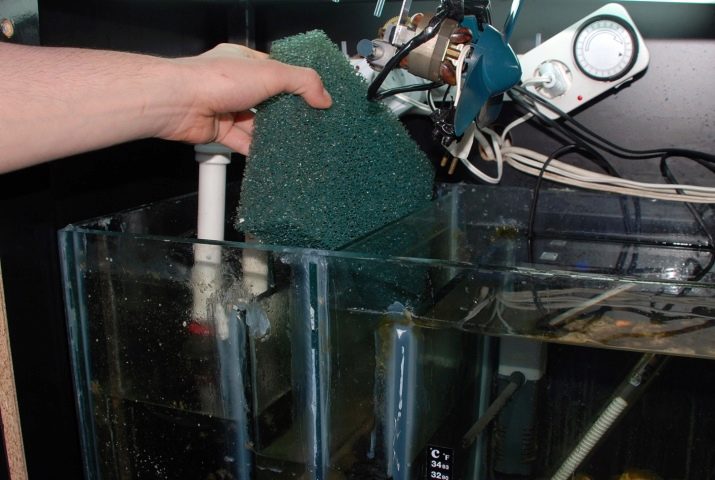
The internal filter needs to be cleaned every 2 weeks, and the external - from two weeks to two months, depending on the condition.
It is very important to monitor the flow of water, and if it is not as strong as before - it's time to clean.
Ways
There are different ways to clean the aquarium filter.
Mechanical
The simplest method of purification, when water passes through a special porous sponge that does not allow dirt, dead vegetation, the remains of feces and feed. It is very important to wash the sponge constantly, because particles of dirt always clog into it, and over time, the filter stops working properly. Without timely washing of the sponge, the quality of water filtration decreases, and the flow of water also slows down. This filter is not only easy to operate, but also practical - there is no need to replace the sponge.

Biological
You can purchase biofiltration.Her essence in the removal of hazardous substances from waste by decomposition into safe particles that do not destroy the microflora of fish. The fish themselves during their life release biological waste into the water, as well as everyday food is not always completely absorbed, settling at the bottom and undergoing the process of decay.
When the decomposition process begins, various nitrates and gases are released into the water, which can cause illness and death for your pets.
Aquarium is a limited territory, and if in nature fishes can freely move in the water space further from the disaster, if necessary, aquarium fishes are forced to breathe harmful fumes and go through all kinds of torment that the owner may not see.
The biological filter is designed in such a way that the special bacteria that inhabit the filter themselves help to reduce the number of dangerous bacteria, decomposing them in such a way that only safe elements from decay remain.
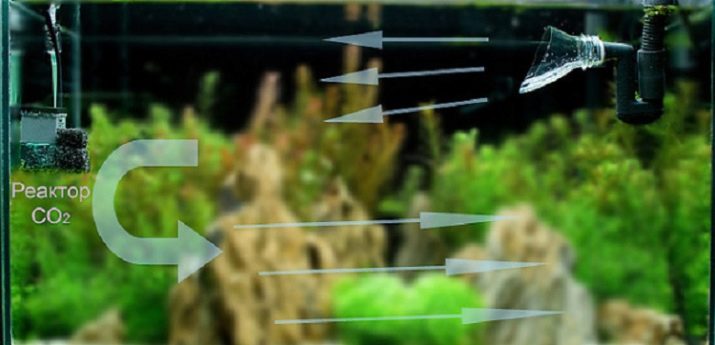
Chemical
This filter is not for every day. It is used only in emergency cases of sudden fish disease, poisoning, or when the water quality suddenly changed. For example, suddenly a strange film appeared on the surface, or the water turned green in a matter of hours.
Water is purified by activated carbon - it has a porous surface and retains all the dirt and harmful microparticles. After cleaning, the coal is thrown away and must not be reused.

It is worth noting that this method of filtering is unacceptable if everything is normal in your aquarium. Many fish holders like to do this “just in case” cleaning method, and often it only hurts.
Cleaning rules
The filter, in addition to the harmful bacteria that it removes from the aquarium, also cultivates useful ones, and therefore just walking through it with soap and brush will be completely irrational.
Try not to wash the unit when you radically change something in the care or breeding of your pets.
For example, if you have acquired new species and are planted with existing ones, or change the water in the aquarium completely, or try a new brand of food.
The balance with such fraud immediately changes, and the filter is just the regulator that creates the harmony of the atmosphere in the aquarium.
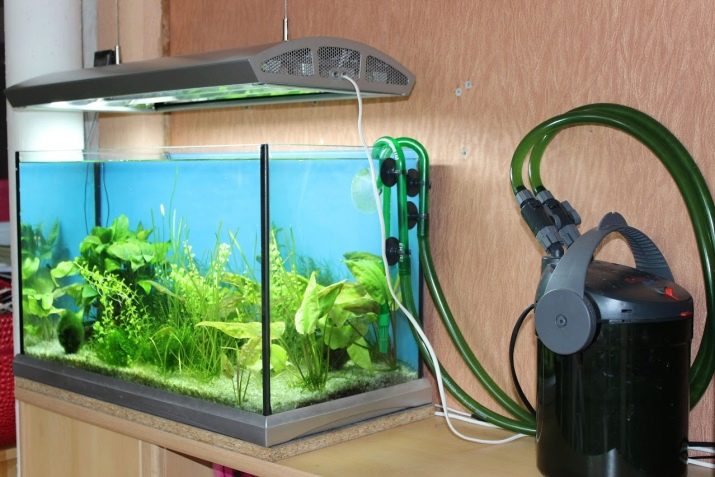
Biofilter cleaning
All sponges are referred to as mechanical filters, as they collect the dirt in the aquarium. Nevertheless, we all understand that in nature fish do not live in crystal clear water, and the absence of various harmful bacteria, exhausts and decay products in water is much more important for them.
These very harmful bacteria that decompose ammonia live on the surface of the washcloths of your purifier. It is important to flush the filter correctly so that most of these bacteria (but not all) are destroyed.
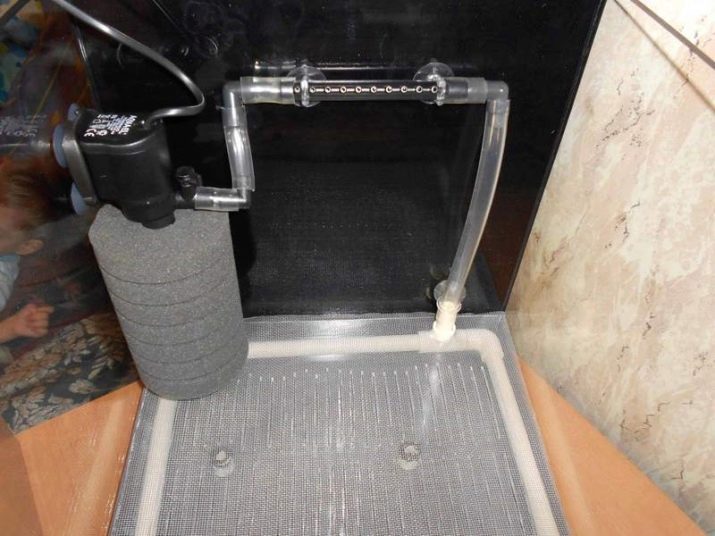
Bacteria are susceptible to conventional cleaning methods - ordinary tap water, soap suds, cleaning products and hard rubbing of the filter with foam rubber or a rag will be harmful to any kind of bacteria.
It is much simpler to wash the filter sponge - just rinse it in the same aquarium water (of course, not in the aquarium itself, but in a separate container) until the sponge visually becomes clean. Sterile conditions are not permissible: it is vital for your fish to leave some of the bacteria to maintain a healthy balance inside the aquarium.

Block change
Many manufacturers recommend changing filter sponges with an enviable frequency, but this is more of a marketing ploy. In reality, a sponge needs to be changed only when its appearance loses its original shape, that is, no more than once a year. As a rule, the washcloth is divided into separate parts inside the mechanism, and only one component can be changed at a time, because if only one part is removed for replacement, the bacteria are transferred and multiplied from the remaining parts, and the balance will not be disturbed.
Change one piece every two weeks, and so you completely replace the washcloth without harm to the fish.
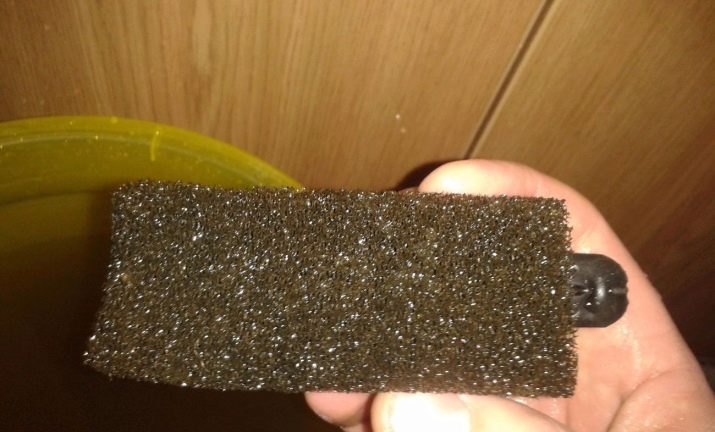
Impeller
Each filter for the aquarium has an impeller - a magnet in the form of a cylinder with a wheel to create water current. It itself is attached to a metal base. It is necessary to clean the impeller, as over time algae and other debris get there, clogging it, and the part ceases to cope with cleaning the aquarium.
It’s very easy to clean the impeller: with simple running water, removing it from the pin on which it is attached and wiping it with a cloth. Everyone loves washing the washcloth, and almost no one remembers the impeller, and it is he who gives impetus to the entire filter for full work.
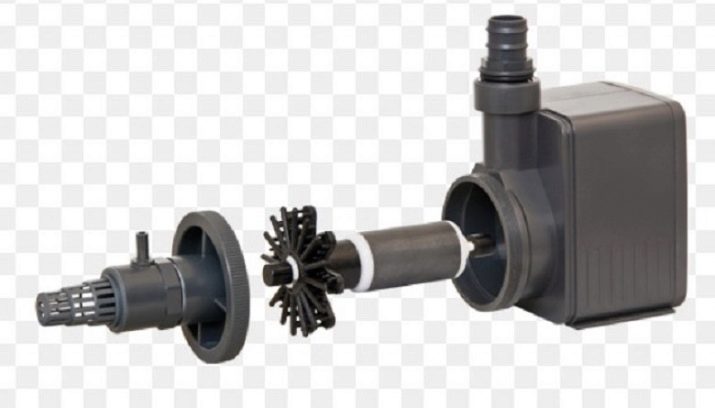
When cleaning your filter, always take note of the care of the impeller, since most often it is its pollution that leads to breakdown of the entire unit.
Create a schedule for caring for aquarium fish, including regular cleaning of the filter, and do not forget to check the level of nitrates in the water, and then your fish will be healthy, and you will be calm.
See below for how to clean the filter in the aquarium.
